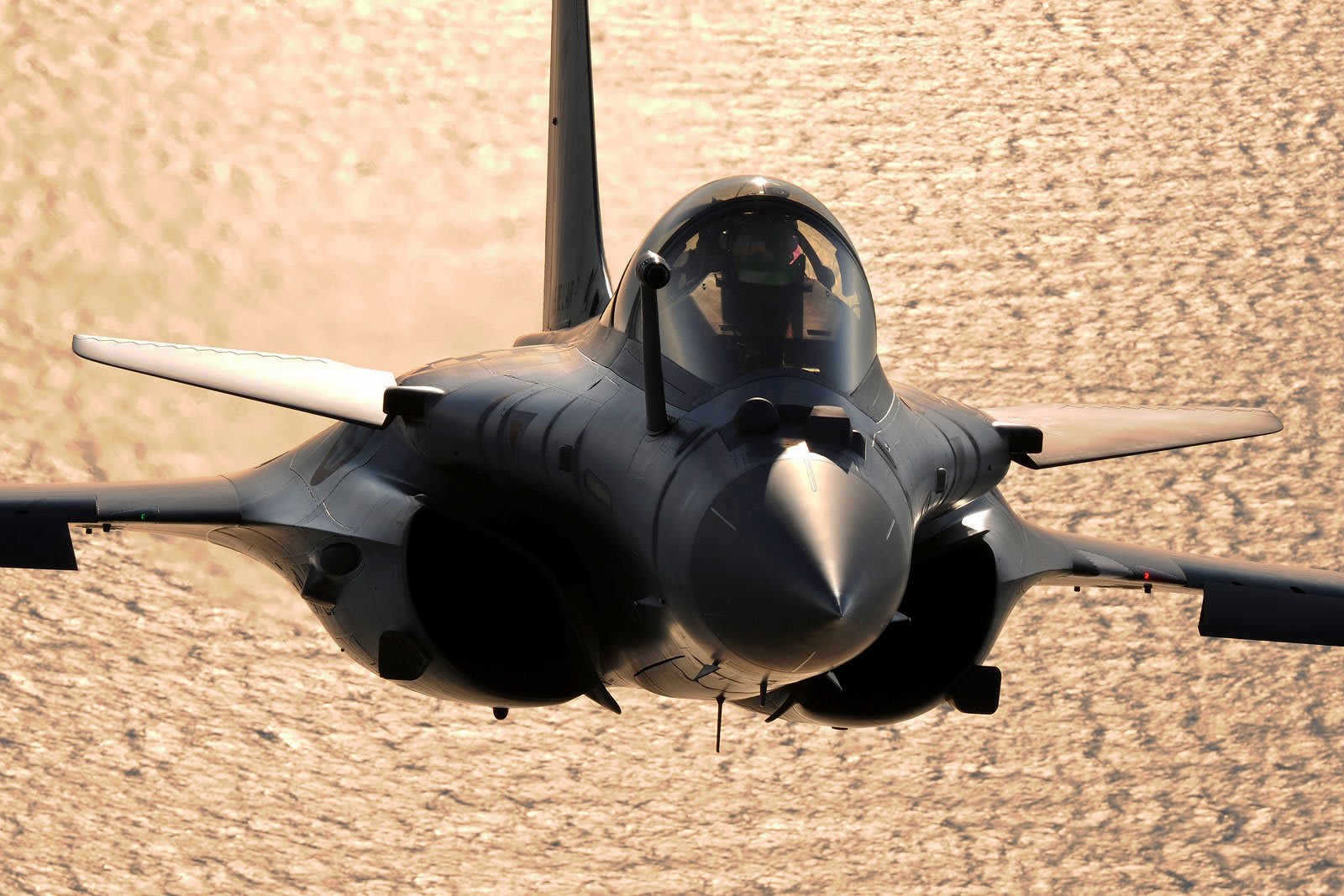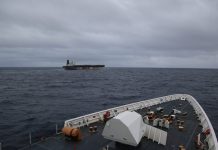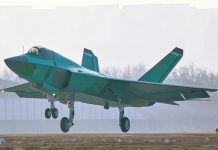The F5 variant of the French Rafale fighter jets is likely to have an array of advanced features that could match the very best in the world. India is among the nations that use 4.5-generation omnirole combat aircraft.
WATCH: World’s Heaviest Aircraft Antonov An-225 Breaks Perimeter Fence At Royal Air Force Base
Dassault Aviation is set to bring an F5 standard of the existing aircraft, “endowed with an impressive number of capabilities”. “At the start of the 2030s, the F5 standard will allow us to further improve the Rafale’s first entry capacity, with new sensors and armaments, but also capacities to communicate, collaborate and be interoperable,” French magazine Zone Militaire quoted Frédéric Parisot, Vice Chief of the French Air and Space Force, as saying.
The Rafale is a twin-engine fighter jet with a delta wing and canard design capable of air supremacy, interdiction, aerial reconnaissance, ground support, in-depth strike, anti-ship strike, and nuclear deterrence missions.
It is capable of carrying a range of missiles including air-to-air ASRAAM and AMRAAM, interoperable HAMMERS and SCALP cruise missiles among others.
- At €7.8B, Why Indian Rafale Jets Are ‘Double The Cost’ Than Egyptian Rafales?
- Why Did Netizens ‘Mock’ Nigeria For Importing JF-17 Jets From Pakistan?
The omnirole 4.5 generation fighter warplane was inducted into the French Navy in 2004 and the French Air Force in 2006. Its multiple variants include single-seat, double-seat and Navy single-seat, known as the Rafale C, B and M respectively.
The combat-proven jets are relevant against both traditional and asymmetrical threats, as shown in countless operations in Afghanistan, Libya, Mali, and Syria. They address the “emerging needs of the armed forces in a changing geopolitical context”.

The targets included tanks, armored vehicles, artillery emplacements, command centers and air-defense systems (SAM launchers), according to the Dassault Aviation’s website.
Dassault keeps upgrading the existing models. The earlier variants include the F1 that was specific to the first aircraft of the French Navy, the F2 with air-to-ground and air-to-air capabilities. The F3 and F3R have “extended versatility” and are fully operationalized.
The latest F4 standard was approved by the French defense procurement agency (DGA) in 2017 and is expected to have increased connectivity, cyber protection, and radar systems.
"The @Dassault_OnAir Rafale will be operational to “2065-ish,” General Parisot (@Armee_de_lair) said.
An F4 version is in the pipeline, and there is thought on an F5. There will be F6 and F7 versions of the Rafale, which will be a “workhorse,” he said" https://t.co/q5KDEcsKEB— FdeStV (@Marsattaqueblog) June 23, 2021
The EurAsian Times earlier reported on the first series of combat tests of the F4-1 variant held between April 26 and 29.
“Rafale will continue to evolve,” General Parisot said at a conference held by the European Intervention Initiative, indicating that F6 and F7 versions will be a “workhorse”.
Rafale’s Global Clientele
India signed an $8.82-billion contract for 36 aircraft in 2016, followed by Egypt which purchased 24 Rafale aircraft, completing the delivery of the last jet in July 2019.
In 2015, Qatar became the third country to strike a $7 billion deal to acquire 24 Rafale fighters followed by an additional 12 jets.
After a gap of five years, in January 2021, Greece signed a $3.04 billion deal to buy 18 Rafale aircraft which included 12 second-hand jets from the French Air Force inventory and 6 new ones to be delivered by 2022.

In May, the Balkan country Croatia became the fifth export customer of Rafale jets under i’s Multi-Role Fighter Aircraft (MRFA) program.
The contract between the French and Croatian authorities will cover the acquisition of 12 Rafale previously in service with the French Air Force, as per the press release.
Dassault’s fighter faces stiff competition from Swedish Saab Gripen E jet, US fifth-generation F-35, and Eurofighter’s Typhoon.
India’s Tryst with Rafales
India inked an $8.82-billion deal with Dassault Aviation for delivery of 36 Rafales jets ahead of the retirement of its Soviet-era MiG-21 fighters.
In July 2020, the first five jets arrived at the Ambala Air Force station and were formally inducted into the 17 Squadron ‘Golden Arrows’ in September.
Since the first delivery up until now, India has received 23 jets out of 36, almost two-thirds of the total count. The latest batch carrying three fighter aircraft landed last month on May 28.
Last week, the Indian Air Force raised the second squadron called 101 Falcons of Chhamb and Akhnoor before their formal induction at Hasimara airbase in West Bengal. The proximity of the Hasimara base to the Sikkim-Bhutan-Tibet tri-junction makes the induction of Rafale critical against the looming Chinese threat.
The #IndianAirForce has raised the second #Rafale squadron????
The 101 'Falcons of Chhamb & Akhnoor' squadron, in Ambala ahead of their formal induction at the Hasimara airbase in West Bengal for the eastern front with #China https://t.co/UqANAvOlpO
— Indo-Pacific News – Watching the CCP-China Threat (@IndoPac_Info) June 21, 2021
The Rafale jets will give a major boost to India’s air defense amid the ongoing Ladakh standoff with China. The maximum speed of the Rafale jet is about Mach 1.8 compared to Chinese J-16s at Mach 2.2.
India has also placed an order of the French-built HAMMER missiles for Rafale jets that have the ability to neutralize any target at the range of around 60-70 km.
READ MORE
- Watch: The Ultimate Dogfight Between US & Russian Fighter Jets Over A ‘Top-Secret’ Air Base In Nevada
- Why India’s Ladakh Region Is Crucial For China’s Rise As An Economic Super-Power?
- 30 Times Faster Than Speed Of Sound: Is China Really Winning The Hypersonic Race With Its JF-22 Wind Tunnel?




